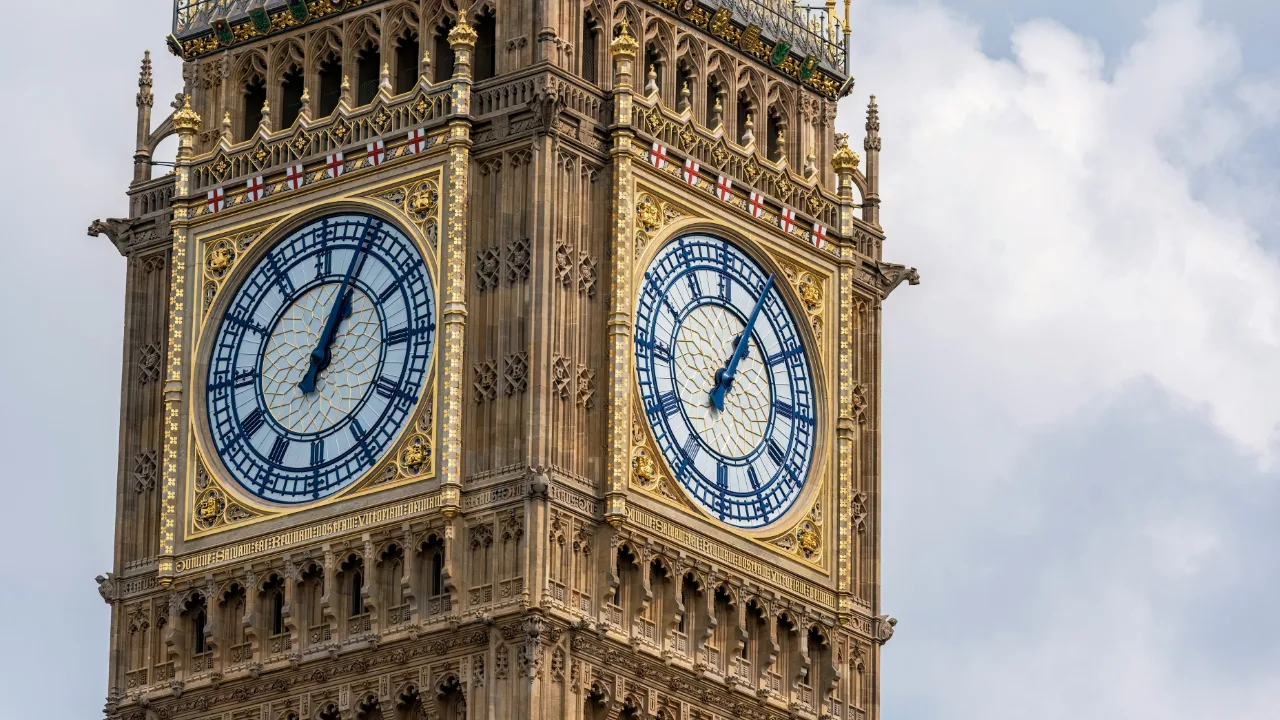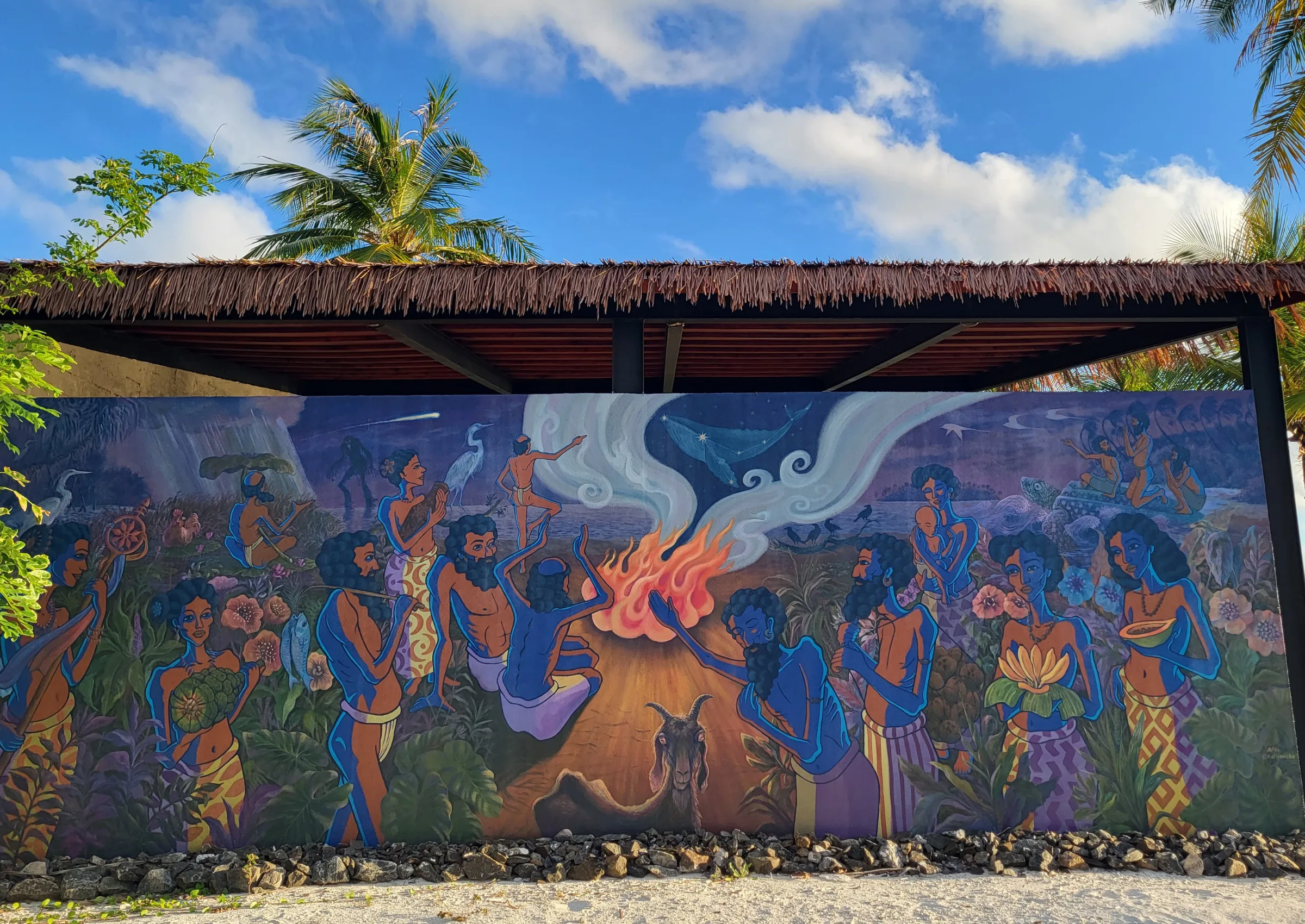Creative services such as advertising, publishing, and design are an important part of global trade. Their rise has been partly due to technology, which has made it easier to trade intangibles, but also because of increasing integration into the production of manufactured goods. In the decade before the pandemic, cross-border trade in services increased 60% faster than trade in goods.
In a new AHRC-funded Creative PEC project, published in Regional Studies, we are using data from the Inquiry in International Trade in Services (ITIS), in combination with the Annual Business Survey (ABS), to provide new evidence on the scale, trends, and geography of UK creative service exports. Second, we develop a measure of industrial relatedness between exports of creative, non-creative services and manufacturing goods to investigate the frequency with which they co-locate with other parts of the economy.
Creative services are a diverse group. The largest part of service exports come from Software, Telecoms, Advertising and Copyrights (copyrighted literary works, sound recordings, films, television programmes and databases). Together these account for around 15% of total UK service exports. As figure 1 shows, other services such as architecture, audio-visual and information also play a role.
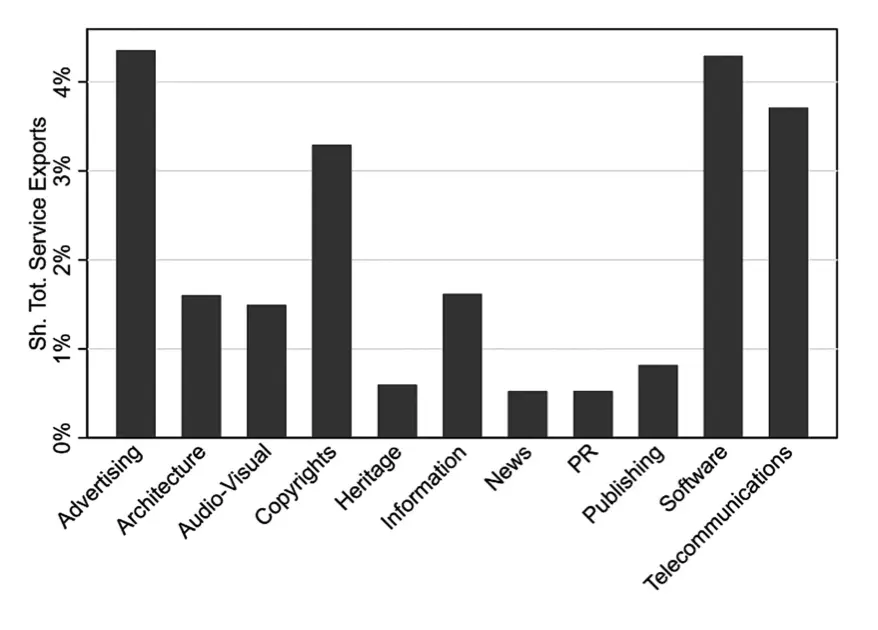
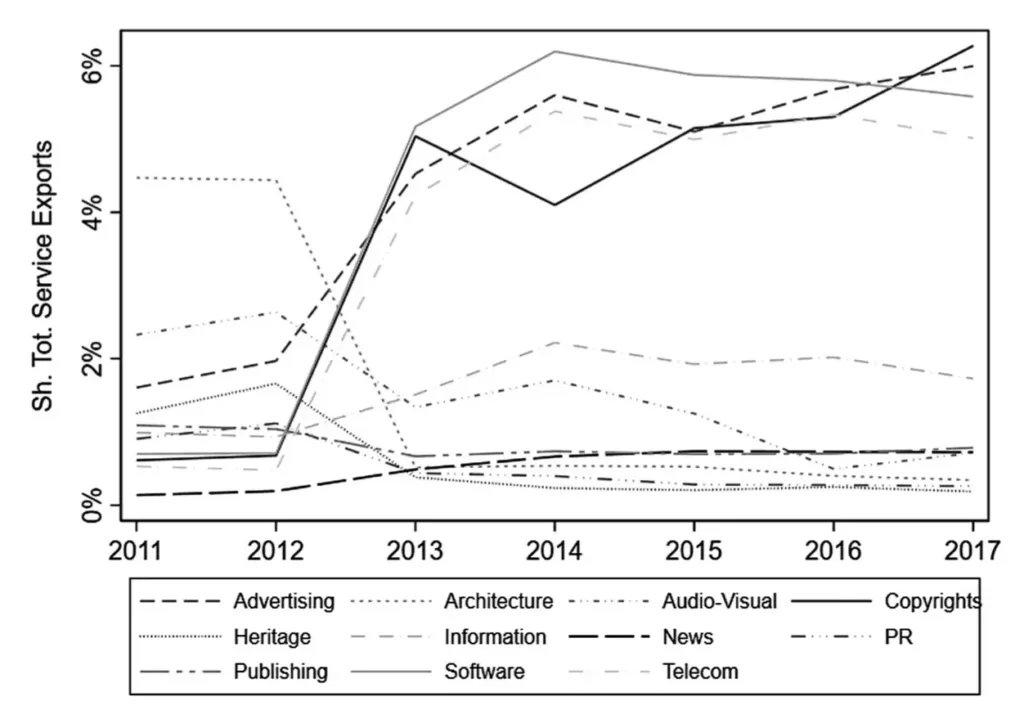
There has been considerable change in the export propensity of these sectors over time. Exports of advertising services, copyrighted creative works, telecommunication services, and computer software have been particularly important, accounting for around 5% of total services exports each. There has been a rapid increase in the share of services in four of the sectors which form the top 10: copyrights, advertising, software and telecommunications, while a relative decline in the share of architectural and audio-visual services exports.
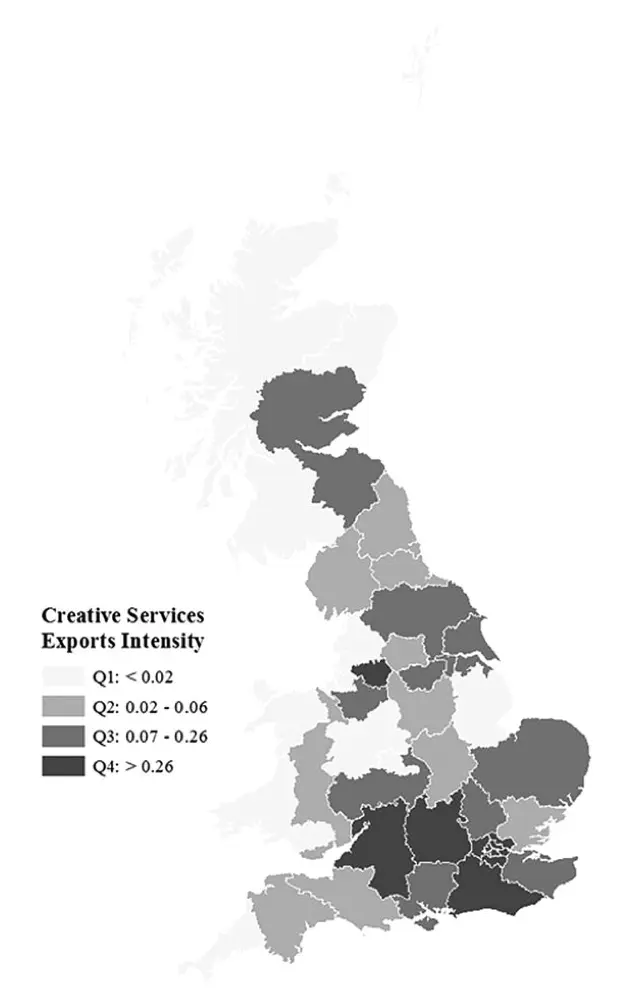
Creative service exports are highly geographically clustered, particularly in London and the South-East, Oxfordshire, Greater Manchester and Yorkshire. This partially reflects the geographical distribution of creative industries. The South-East and London account for around 40% of creative industry employees and a third of creative businesses, so it is hardly surprising that this is where most creative service exports come from.

Where do these exports go?
The largest share of UK creative service exports go to the United States, with over a fifth heading there. Germany, France and other EU countries are also well represented – although there is also considerable trade with Switzerland and Norway. Our data only goes to 2017, so won’t have accounted for the impact of Brexit – but they do show a problem for UK policymakers with EU (and EU linked) destinations so important.
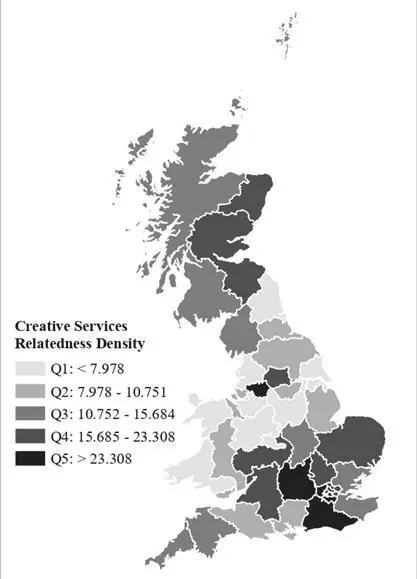
Future Creative Service Growth
We also show relatedness between creative services exports and the rest of local industrial structure in figure 4, above. This shows the type of environments which might be suitable for future creative service growth, and the type of industries with which they tend to co-locate (potentially giving information on local input-output links). Creative service exports are particularly well suited to urban areas (London, Manchester, Edinburgh, Leeds) and hubs of knowledge creation (East Anglia, Oxfordshire, Surrey, Sussex and Warwickshire). These are places where clusters of universities and knowledge intensive industries could play a key role in fostering the growth of creative services.
Existing comparative advantage in manufacturing and other services exports could allow regions to diversify away from mature industries and specialize in new creative services.
Creative services have become increasingly important part of international trade. Future developments in ICT and innovation in digital services are likely to make the sector even more important in the future. As a key strength of the British economy, laying the conditions for creative services to continue their export success will be an important part of any future UK growth strategy. If the UK is to succeed as a trading nation, creative service exports will need to play an important role.
__________________________________________
Thumbnail image by Lars Kienle on Unsplash
Hero image by Mario Caruso on Unsplash
Related Blogs
Research resources on Creative Clusters
We’ve collated recent Creative PEC reports to help with the preparation of your Creative Cluster bid…
What UK Job Postings Reveal About the Changing Demand for Creativity Skills in the Age of Generative AI
The emergence of AI promises faster economic growth, but also raises concerns about labour market di…
Creative PEC’s digest of the 2025 Autumn Budget
Creative PEC's Policy Unit digests the Government’s 2025 Budget and its impact on the UK’s creative …
Why do freelancers fall through the gaps?
Why are freelancers in the Performing Arts consistently overlooked, unseen, and unheard?
Insights from the Labour Party Conference 2025
Creative PEC Policy Adviser Emily Hopkins attended the Labour Party Conference in September 2025.
Association of South-East Asian Nations’ long-term view of the creative economy
John Newbigin examines the ASEAN approach to sustainability and the creative economy.
Take our Audience Survey
Take our quick survey and you might win a National Art Pass.
Culture, community resilience and climate change: becoming custodians of our planet
Reflecting on the relationship between climate change, cultural expressions and island states.
Cultural Industries at the Crossroads of Tourism and Development in the Maldives
Eduardo Saravia explores the significant opportunities – and risks – of relying on tourism.
When Data Hurts: What the Arts Can Learn from the BLS Firing
Douglas Noonan and Joanna Woronkowicz discuss the dangers of dismissing or discarding data that does…
Rewriting the Logic: Designing Responsible AI for the Creative Sector
As AI reshapes how culture is made and shared, Ve Dewey asks: Who gets to create? Whose voices are e…
Reflections from Creative Industries 2025: The Road to Sustainability
How can the creative industries drive meaningful environmental sustainability?



